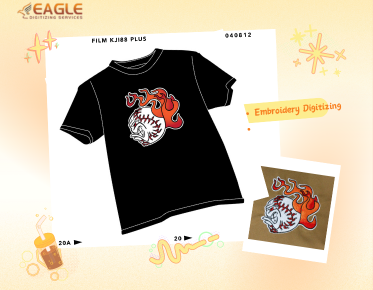Transform Your Vector File: Editing Tips Post-Conversion
Once you've converted your image into a vector file, the editing
process opens up a realm of creative possibilities. Vector files allow for
seamless adjustments to color, shape, and size without compromising quality,
making them perfect for any design project. However, navigating the editing
landscape can be tricky if you’re unfamiliar with the tools and techniques
available. In this article, we’ll share essential tips to help you fine-tune
your vector files post-conversion, ensuring your designs are polished and
professional every time.
Why Editing Post-Conversion Is Crucial for Quality
Editing your
vector file after conversion is not just a nicety; it’s a necessity. A
converted vector file often retains only the basic outlines of the original
design, leaving behind a canvas ripe for refinement. This step is pivotal in
enhancing clarity, ensuring that your design reflects your intended vision with
precision. Neglecting to polish your vector file can lead to lackluster results
that fail to engage viewers or convey your brand’s message effectively.
Post-conversion edits allow you to fine-tune the nuances, colors, and shapes,
transforming a rudimentary conversion into a stunning work of art.
Tools You’ll Need for Effective Editing
Essential
Software Options for Editing Vectors
The right tools
can make all the difference when it comes to editing vector files. Adobe
Illustrator is the gold standard for vector editing, offering a robust suite of
features that cater to both beginners and seasoned professionals. CorelDRAW is
another powerful contender, with an intuitive interface that simplifies complex
edits. If you’re exploring alternatives, Affinity Designer presents a
compelling option with its affordable pricing and rich functionalities. For
those venturing into the realm of free software, Inkscape stands out, providing
a versatile platform for crafting and editing vector graphics without the
financial commitment.
Exploring
Free vs. Paid Vector Editing Tools
When deciding
between free and paid software, consider the scale and complexity of your
projects. Free tools, while often feature-rich, may lack the advanced
functionalities found in premium software. However, they can be excellent for
simpler tasks or if you’re just starting out. Paid software typically offers
comprehensive support, regular updates, and a broader array of tools that can
streamline your workflow. Weigh the benefits based on your specific needs, and
you’ll be on the right track to making an informed choice.
Preparing Your Vector File for Editing
Opening
and Saving Your Vector File Properly
Before diving
into edits, ensure that your vector file is opened correctly to preserve its
quality. Use the “Open” function in your software to load the file, ensuring
that all layers and paths are intact. When saving your edited file, opt for
formats that maintain vector integrity, like AI or EPS. This practice not only
safeguards your design but also facilitates future modifications without
degradation of quality.
Checking
Layers: How to Organize Your Workspace
A well-organized
workspace is key to effective editing. Start by reviewing your layers panel;
layers should be labeled and ordered logically for easy navigation. Group
related elements together, such as shapes, backgrounds, or text, to streamline
your editing process. This organization reduces clutter and enhances your
efficiency, allowing you to focus on the creative aspects of your design.
Basic Edits You Can Make to Your Vector File
Resizing
Your Vector Without Losing Quality
One of the
significant advantages of vector files is their scalability. Resizing is
straightforward; simply select the entire design or individual components and
adjust the dimensions as needed. Ensure that you hold down the Shift key while
resizing to maintain the aspect ratio, preventing any distortion. This flexibility
allows you to adapt your design to various contexts, whether it’s a small icon
or a large-scale banner.
Changing
Colors: Tips for Color Management
Colors can make
or break a design. Use the color picker to adjust hues, ensuring that your
palette aligns with your branding or project requirements. Pay attention to
color modes—RGB for digital use and CMYK for print. Consistency is key;
maintain a cohesive color scheme throughout your design to foster a harmonious
visual experience.
Adjusting
Stroke and Fill Settings for Better Visuals
Fine-tuning the
stroke and fill settings enhances the overall aesthetics of your vector file.
Experiment with different stroke weights to add depth and dimension to your
design. Consider adjusting the fill color or adding gradients to create visual
interest. These subtle modifications can dramatically impact the viewer’s
perception of your artwork.
Advanced Editing Techniques
Using
the Pen Tool for Precise Edits
The Pen Tool is a
quintessential feature for achieving precision in your vector edits. With it,
you can create custom shapes, adjust paths, and manipulate anchor points to
refine your design. Mastering this tool can elevate your editing skills,
allowing for intricate adjustments that can distinguish your work from the
average. Practice is essential; spend time familiarizing yourself with the Pen
Tool’s capabilities to unlock its full potential.
Manipulating
Anchor Points for Custom Shapes
Once you’ve created
shapes, manipulating anchor points is crucial for achieving the desired
contours and curves. Use the Direct Selection Tool to click on anchor points
and drag them to refine your shapes. This technique enables you to create more
organic forms and intricate designs, resulting in a polished final product.
Creating
Gradients and Patterns for Depth
Adding gradients
and patterns can infuse your vector design with
depth and complexity. Gradients create a smooth transition between colors,
adding dimension to shapes. Patterns, on the other hand, can provide texture
and interest. Experiment with different gradient types and patterns to find the
combinations that best enhance your design’s aesthetic appeal.
Cleaning Up Your Vector Design
Removing
Unwanted Elements: How to Simplify Your Design
Simplicity often
breeds elegance. Take time to scrutinize your design and remove any unnecessary
elements that may detract from its clarity. Whether it’s extraneous lines or
overly complex shapes, decluttering your design can lead to a more impactful
visual. Simplification allows the core message of your artwork to shine
through.
Merging
and Grouping Shapes for Easier Management
Merging and
grouping shapes can significantly streamline your editing process. Use the
“Merge” function to combine overlapping shapes into a single entity, reducing
the number of layers and simplifying your workspace. Grouping related elements
together facilitates easier manipulation and allows for cohesive adjustments
across multiple components.
Using
Clipping Masks to Refine Your Artwork
Clipping masks
are a powerful technique for creating complex designs without overwhelming your
layers panel. By using a clipping mask, you can define which parts of your
artwork are visible based on the shape of another object. This method is
perfect for adding intricate details or overlays, allowing you to maintain a
clean and organized workspace while achieving stunning visual effects.
Exporting Your Edited Vector File
Choosing
the Right File Format for Your Needs
When it comes
time to export your vector file, selecting the appropriate format is crucial.
For most design projects, saving as an AI or EPS file retains vector integrity.
However, for web use, consider exporting as SVG or PNG, ensuring that you
select the right settings for transparency and quality. Each format serves
distinct purposes, so choose wisely based on your intended application.
Understanding
Export Settings for Different Outputs
Export settings
can greatly influence the final output of your vector design. Be mindful of
dimensions, color profiles, and resolution based on your specific needs. For
print, opt for higher DPI settings to maintain quality, while for digital use,
a lower DPI may suffice. Familiarizing yourself with these settings can prevent
unpleasant surprises later on.
How
to Prepare Your Vector for Print vs. Digital Use
Preparing your
vector file for print involves ensuring that colors are set to CMYK and that
the resolution is adequate for high-quality printing. Conversely, for digital
formats, ensure that your file is optimized for web use, utilizing RGB color
mode and considering file size to ensure fast loading times. Understanding
these distinctions is key to producing a successful final product tailored to
its intended medium.
Testing Your Edited Vector File
How
to Conduct a Quality Check on Your Edits
Once you’ve made
your edits, it’s vital to conduct a thorough quality check. Zoom in and
scrutinize every detail of your design to ensure that paths are clean and
colors are consistent. Preview the file in various formats to see how it holds
up under different conditions. This meticulous review process helps to catch
any errors before final delivery.
Previewing
Your Vector in Different Formats
Testing your
vector file in different formats provides insight into how it will appear in
real-world applications. Open the file in various software programs or convert
it to different formats to assess its versatility. This previewing step allows
you to make any necessary adjustments to ensure your design is robust and ready
for any use case.
Using
Proofs to Ensure Everything Looks Great
Before finalizing
your design, consider creating proofs for print and digital applications. These
proofs offer a glimpse of how your design will look once printed or displayed
on a screen, allowing you to catch any potential issues. A careful review of
proofs can save you from costly mistakes and ensure that your final output
meets your standards.
Common Issues When Editing Vectors
Dealing
with Color Shifts and Other Anomalies
Color shifts can
occur during the editing or exporting process, often due to discrepancies in
color profiles. To mitigate this issue, ensure that you’re consistently using
the same color mode throughout your design. Regularly compare your work to the
original color references to maintain accuracy, preventing any unwanted
surprises later.
Fixing
Problems with Missing Elements or Layers
Missing elements
or layers can disrupt the flow of your design. If you notice elements that have
disappeared, check your layers panel to ensure they’re not hidden or locked. If
layers are missing altogether, consider whether they were accidentally deleted
or if you opened a different version of the file. Staying organized with naming
conventions and layer management can help prevent this issue from occurring in
the first place.
Managing
File Size Without Sacrificing Quality
Large file sizes
can be cumbersome, particularly when sharing or uploading designs. Use optimization
techniques, such as flattening layers or simplifying complex paths, to reduce
file size without sacrificing quality. Regularly assess the balance between
file size and visual fidelity to ensure that your designs remain practical for
various applications.
Final Touches Before Finalizing
Your Vector
How
to Make Sure Your Edits Are Seamless
Ensuring that
your edits are seamless involves reviewing your design for any inconsistencies.
Look for any abrupt changes in color, abrupt lines, or misaligned elements. A
thorough examination will help you achieve a polished look, making your final
product appear professionally crafted.
Saving
Versions: Why It's Important for Revisions
Saving multiple
versions of your vector file is a prudent practice, allowing you to revert to
earlier iterations if necessary. This habit safeguards against irreversible
mistakes and provides flexibility during the editing process. Maintain a clear
naming convention for your versions to keep track of changes and revisions, streamlining
your workflow.
Masteringthe art of editing vector files is a journey that leads to remarkable design outcomes. Through careful refinement, thoughtful organization, and a deep understanding of your tools, you can transform ordinary graphics into stunning visual masterpieces. Embrace the editing process as an opportunity for creativity and innovation, and watch your designs evolve into truly captivating works of art.



